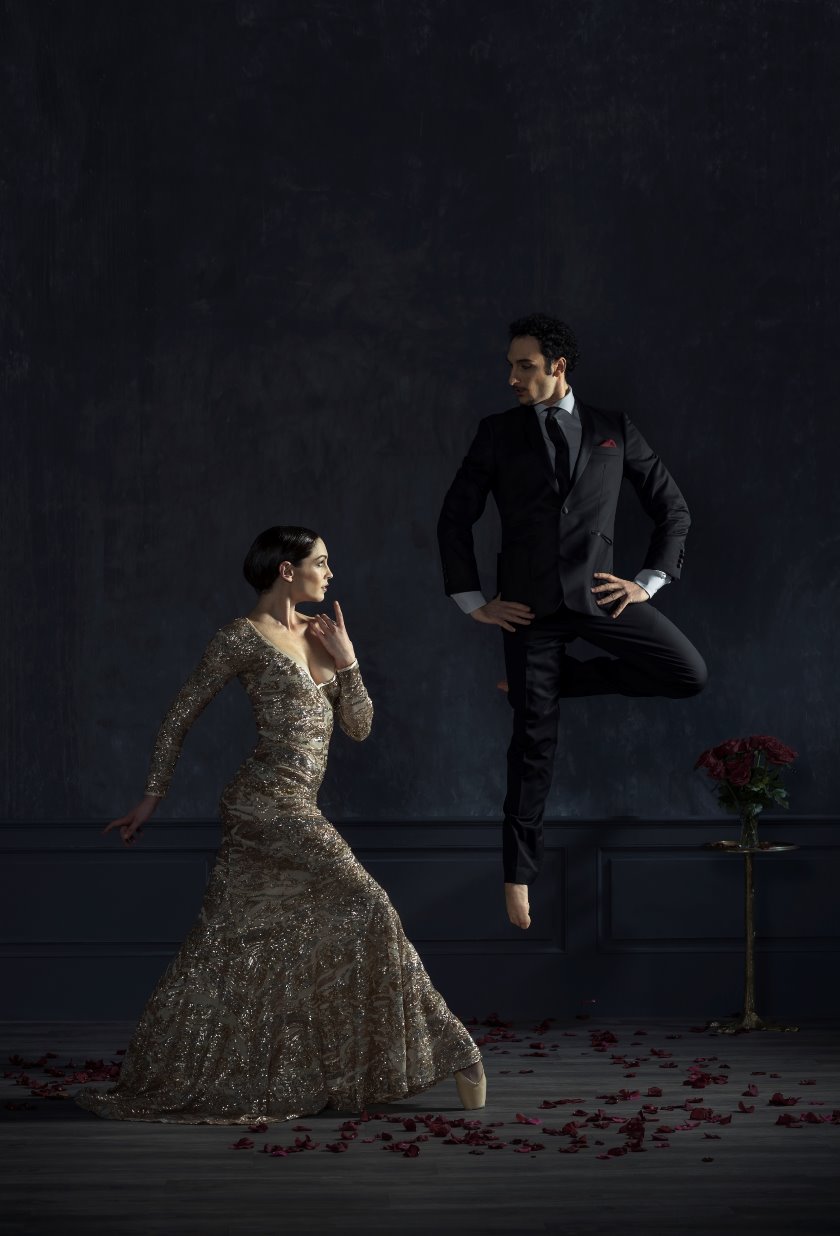
Evan Li

Royal New Zealand Ballet
Top Mayu Tanigaito and Kohei Iwamoto as Kitri and Basilio. Above A Barcelona town square scene as pictured in the programme.
It’s always a pleasure to kick off a Royal New Zealand Ballet season on a high. Don Quixote, which opened at the St James in Wellington tonight, takes the well known ballet, set to the music of Ludwig Minkus, and tweaks it for modern audiences.
It is a restaging of the 2008 production of Don Quixote by the Royal New Zealand Ballet. The choreography by Adrian Burnett, after Marius Petipa, is intact, as are the concept, sets and costumes as conceived by former artistic director Gary Harris, with tiny tweaks to keep audiences entertained (watch for the sailors’ selfie in the third act). Sharon the mechanical dog is still there to delight younger audience members, and the story is particularly easy to follow; while ballet veterans can enjoy the talent of the new dancers, particularly Kohei Iwamoto and Mayu Tanigaito as Basilio and Kitri respectively.
The design brings the seventeenth-century story, and the nineteenth-century ballet, more firmly into the twentieth century, with Don Quixote donning an aviator’s cap and jacket, bringing his mop with him, taking the place of Rocinante, the horse. There are plenty of Iberian references in the bright costumes and the hairstyles, as well as the choreography, with flourishes in the movement and fans recalling flamenco dances, even if the structure of the ballet remains very Russian.
The Don’s bedroom and the Barcelona town square contrast each other: the former is packed with books, darkening the set, while the latter is bright and airy, suggesting a seaside location. Nigel Gaynor conducted a faultless Orchestra Wellington.
John Hull makes for an entertaining Don Quixote, with big shoes to fill—Sir Jon Trimmer delighted audiences in 2008—but it is the remaining roles which confirm a few accepted ideas about performance. The first is that it’s often more delicious playing a villain, as Paul Mathews steps back into the role of Gamache, complete with his pet dog, while Abigail Boyle tonight played Mercedes. This pair gave captivating performances, especially Mathews in each of the three acts; he and Boyle almost upstaged the others in the first scene of the third act, as they returned to Barcelona after robbing the Don. As Gamache gets drunk, Mathews dances accordingly—and it’s often harder to pull that off than performing traditional moves.
Dulcinea appears briefly in the dream sequence after the robbery takes place, and less is made of her role.
The second idea is that if you get the subsidiary characters right, the production will feel more fulfilled, and Shane Urton’s performance as the Don’s nephew, Sancho, had a wonderful and intentional naïveté as he accompanies his uncle on the adventure. Urton stayed in character till the end, and enriched the ballet no end.
The third idea is that audiences will always welcome a happy-ending love story. Tanigaito already received applause in the first act for a series of fouettés, but it was her pas de deux with Iwamoto in the third act, and his dramatic catch, where the attention rested firmly again on Basilio and Kitri. With increasing energy on stage from the courting couple, Don Quixote finished on an expected high.
Don Quixote will continue in Wellington till March 7, before moving to Christchurch for March 11–14, Invercargill for March 18, Dunedin for March 21, Auckland for March 26–9, and Palmerston North for its final performance on April 1. Further information can be found at the RNZB’s website at www.rnzb.org.nz.—Jack Yan, Publisher








